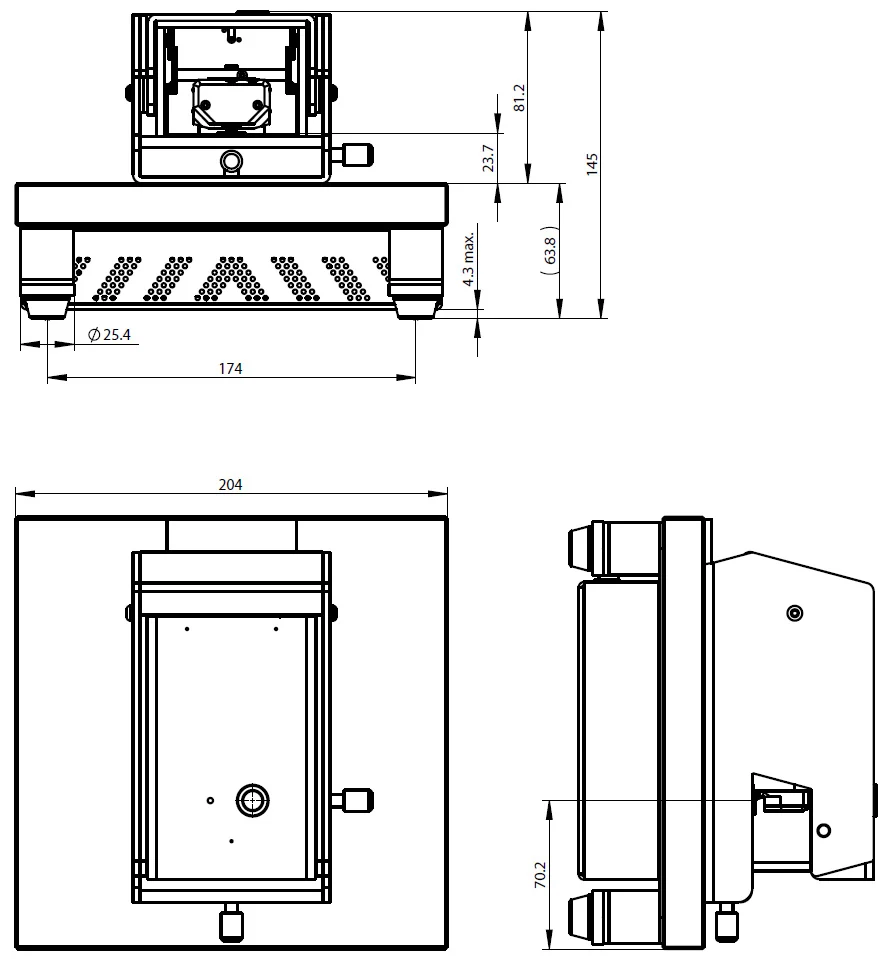The NaioAFM is an atomic force microscope designed specifically for nanoeducation and fundamental research on tiny samples. This all-in-one AFM system delivers good performance and ease of use at a price and footprint that is suitable for everyone and any application.
- Popular user-friendly design
- All standard operating modes available
- All-in-one plug-and-play AFM system
For several years we have used the Easyscan 2 and the NaioAFM to provide AFM training, for student research projects and demonstrations. These AFMs have provided us with years of exceptional use. They have allowed students to acquire complex skill sets associated with AFM imaging with great ease.
Dr. Wesley C. Sanders, Associate Professor, Engineering Department, Salt Lake Community College
Dr. Wesley C. Sanders added, “The efficient design of the AFM hardware and the user-friendly software has been ideal for students enrolled in our semester-long AFM course. In addition to high-quality instrumentation, Nanosurf scientists have provided us with fast and outstanding service. I highly recommend using Nanosurf AFMs for educational, training, and research purposes.”
Get Started Within Minutes
Simply connect the power and USB connections to the NaioAFM, launch the user-friendly software and the application is ready to go in minutes. There is no need for any further setup.
To understand how simple it is, watch the overview video. Since the NaioAFM includes a cantilever alignment chip, cantilever interchange is simple, and laser alignment is no longer necessary. To see how it is done, watch the video of the cantilever exchange.
NaioAFM System Overview
Video Credit: Nanosurf AG
User’s Experience
The NaioAFM allows new users to acquire meaningful AFM images and data in as little as two hours. In the context of a highly time-constrained course, when perhaps only a total of twelve lab hours are planned, this efficiency is a significant advantage over many other AFMs, for which the time commitment might be two or three times greater.
Dr. Nancy Burnham, Professor, Physics Department, Worcester Polytechnic Institute
YouTube Tutorial Videos
NaioAFM Tutorial 1, Basic Introduction
This playlist of 12 videos by Dr. Nancy Burnham shows how the NaioAFM is used in atomic force microscopy classes at the Physics department of the Worcester Polytechnic Institute. Video Credit: Nanosurf AG
NaioSTM Imaging Modes
This diagram depicts the instrument’s many modes. Some modes may involve the use of extra hardware or software. Please see the brochure for further information.
Standard Imaging Modes
- Dynamic force mode (Tapping mode)
- Phase imaging mode
- Static force mode
Magnetic Properties
- Magnetic force microscopy
Electrical Properties
- Electrostatic force microscopy (EFM)
- Scanning spreading resistance microscopy (SSRM)
- Conductive AFM (C-AFM)
Mechanical Properties
- Force modulation
- Force mapping
- Stiffness and modulus
- Force spectroscopy
- Adhesion
Other Measurement Modes
- Lithography and nanomanipulation
System Specifications
Table 1. Scanner. Source: Nanosurf AG
| . |
. |
| Max. scan range / scan height (resolution) (1) |
70 μm (1.0 nm) / 14 μm (0.2 nm) |
| Static / Dynamic RMS Z-noise |
typ. 0.4 nm (max. 0.8 nm) / typ. 0.3 nm (max. 0.8 nm) |
| Max. sample size / height |
12 mm / 3.5 mm |
| Max. sample stage positioning range |
12 mm travel in each direction (6 mm from center to all sides) |
| Top view camera |
3×3 mm FOV, 4× digital zoom, 2 μm optical resolution, 2048×1536 pixels, in-axis LED illumination |
| Side view observation |
5×5 mm FOV, variable LED illumination (with optional side view camera: 2×2 mm FOV, 1280×1024 pixels) |
| Approach |
4 mm linear motor, continuous or step-by-step approach |
(1) Manufacturing tolerances are ±10%
Table 2. Cantilever. Source: Nanosurf AG
| . |
. |
| Width |
min. 28 μm |
| Length |
min. 225 μm or XY corrected |
| Reflective coating |
Required on complete cantilever |
| Liquid measurements |
Not possible |
| Alignment grooves |
Required |
| Resonance frequency dynamic mode |
15 kHz to 350 kHz |
| Cantilever shape |
Single rectangular cantilevers only |
| Chip thickness |
300 μm |
System Dimensions

Image Credit: Nanosurf AG